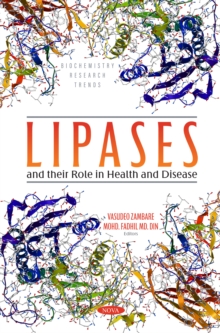
Biochemical Studies on Some Biomarkers of Xenobiotic Exposure PDF
by Vivek Kumar Gupta
Part of the Biochemistry Research Trends series
Description
Pesticides belonging to carbamate and organophosphate groups have the potential to induce oxidative stress.
However, the role of aqueous extract of A. vera has not been properly studied to demonstrate its ameliorative potential against the toxicity induced by these pesticides in single and combination in different organs of mammalian systems.
After an extensive literature survey on the subject, an endeavor has been made to define the following objectives in order to fill up the existing lacuna of information about cartap and malathion induced oxidative stress in rat blood, brain and liver and its impact on neurotransmission as well as energy metabolism.
Liver and blood were also included in this study for establishing a more meaningful agreement.
The present study was therefore undertaken to delineate the differential impacts of cartap and malathion on the biochemical and histological parameters in Wistar rats.
In addition, the prophylactic effect of aqueous extract of A. vera leaves has also been evaluated. The objectives of the present study include: evaluation of xenobiotic-induced oxidative stress, determination of activity of acetylcholinesterase and other esterases in the brains of rats exposed to xenobiotics as potential biomarkers of neurotoxicity; evaluation of different enzymes of energy metabolism in rats exposed to xenobiotics; measurement of specific parameters concerning the function of the kidney and liver in rats exposed to xenobiotics; evaluation of AChE isozyme profile to specifically understand the target of xenobiotics in the brain of rats; analysis of patterns of major biomolecules (proteins/DNA) in rats exposed to xenobiotics for different treatment durations; and assessment of the ameliorative impact of phytochemicals, if any, on xenobiotics.
This book is divided into eight sections. Section 1 contains the general introduction and background of the study.
Section 2 contains an extensive literature survey on the subject so as to present updated information.
Section 3 demonstrates the main objectives of the study.
Section 4 describes the various experimental designs, procedures, protocols, tools and techniques.
Section 5 illustrates the data obtained from this study.
Section 6 enumerates the discussion of the data and associated mechanisms.
Section 7 includes the summary and conclusion of the entire study.
Section 8 includes citations and references used in this work.
This book contains many specific diagrams, illustrations and presentations in simple tables and figures which are self-explanatory so as to make any reader well versed to this subject.
In addition, specific flow charts are added to simplify the presentation.
Information
-
Download - Immediately Available
- Format:PDF
- Pages:205 pages
- Publisher:Nova Science Publishers, Inc.
- Publication Date:04/06/2021
- Category:
- ISBN:9781536195002
Other Formats
- Hardback from £134.15
Information
-
Download - Immediately Available
- Format:PDF
- Pages:205 pages
- Publisher:Nova Science Publishers, Inc.
- Publication Date:04/06/2021
- Category:
- ISBN:9781536195002










